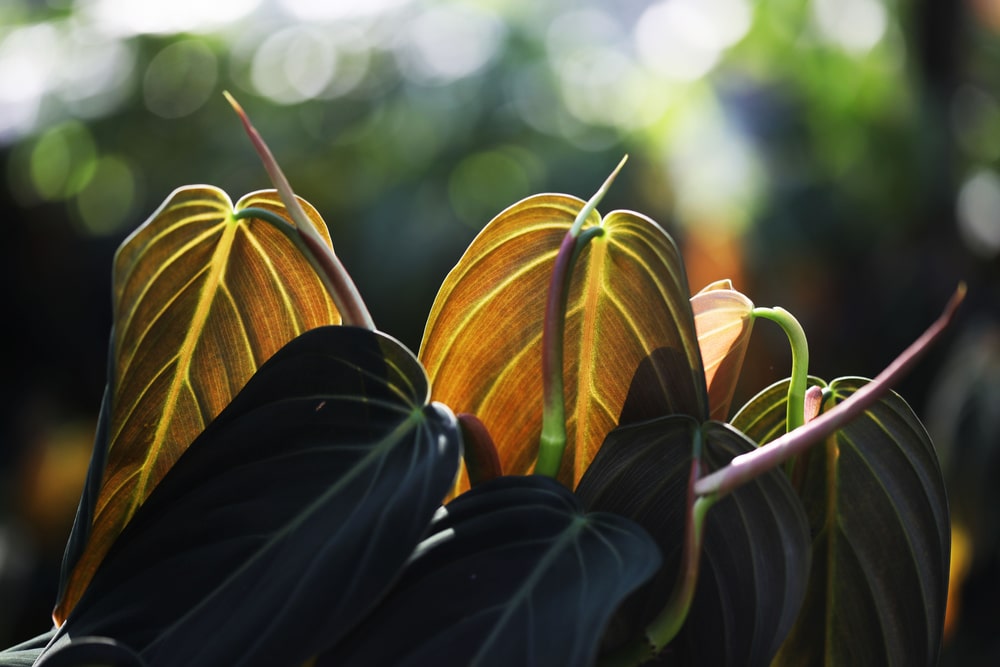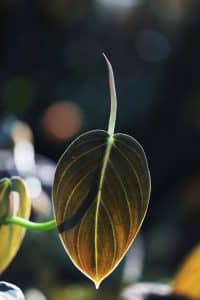There are several philodendron varieties, and trust us: none will disappoint you! But if you are looking for a rare plant that will delight you with lush foliage and huge leaves, look no further than the Gigas variety!
And if you haven’t heard about it, don’t worry: here is everything you must know about growing a philodendron gigas. Keep reading this essential guide to having a thriving plant in your home!
| Botanical Name | Philodendron gigas |
| Common Name | Philodendron gigas |
| Plant Type | Perennial |
| Flower Color | As a houseplant, a philodendron Gigas will rarely bloom. |
| Size When Mature | Up to 10 feet tall, with leaves growing at around one foot in length when indoors |
| Bloom Time | Not applicable |
| Sun Requirements | Moderately bright light, filtered sun |
| USDA Hardiness Zones | 9-11 |
| Soil PH Range | Between 5.6 and 7.5 |
| Soil Type | Well-draining, fertile, and slightly acidic to neutral |
| Water Needs | Medium |
| Native Area | Panama |
What you Need to Know About Philodendron Gigas
Native to Panama, the philodendron gigas is a rare houseplant. And if you can get your hands on it, you should consider adding this stunning plant to your interiors. Because it might be hard to find, don’t despair if you can’t get one when you want it. But if you do have access to it, take it!
It might be challenging to grow, but once you get familiar with its needs and requirements, you’ll enjoy its gorgeous velvety foliage with yellow and brown variegations and veins. All you have to do is imitate its natural environment. And you’ll find all the tips on how to do so in the following sections!
Before we continue, remember to keep this plant out of the reach of children and pets: philodendrons are toxic when ingested!
How to Care for Philodendron Gigas
So, to grow a thriving Philodendron gigas, you must pay attention to lighting, watering, and feeding. If you are unsure how to do so, don’t worry: we have your back!
Light
For best results, you should place your philodendron gigas where it can receive plenty of indirect sunlight. The ideal position is next to an east-facing window. If you only have south exposure, don’t worry: add some shears to prevent sunburn. While the plant might also grow in light-deprived conditions, its leaves will be smaller and less attractive.
Don’t forget to rotate your plant regularly to ensure an even growth pattern.
Water and Soil Needs
Picking the right potting mix is crucial to your plant’s health. You must choose a well-draining substrate with adequate retention to provide your philodendron with all it needs to thrive (without overwatering it). Don’t forget to provide your plant with a pole or another support to let it climb around it.
Also, add orchid bark, perlite, or gravel to decrease soil compaction. Remember to follow a regular watering schedule (and adapt it to your local climate). Keep the soil moist but never water it unless its top few inches are dry.
You will have to decrease watering frequency in the winter when the plant goes dormant and the evaporation rate decreases. Keep in mind that rotting is an issue with philodendrons!
Temperature Requirements
Philodendron Gigas is a tropical plant that requires warmth to thrive. Keep the temperatures between 60 and 85°F, and you shouldn’t have any issues. Avoid exposing your plant to the cold (it will die below 50°F) and only grow it outdoors if you live in USDA hardiness zones between 9 and 11.
Also, keep the humidity levels high: around 60 to 80% is ideal. Mist your plant’s leaves or add a pebble tray for best results.
Fertilizer
Add houseplant fertilizers in the spring and summer to encourage your philodendron gigas’ growth. Dilute the product to half strength to minimize issues and suspend the application in the winter.
Common Diseases
Overwatering is a source of several diseases in philodendron gigas. Symptoms might include wilting, yellowing, and rotting. To save your plant from the condition, consider transplanting it to a new location (and potting mix).
Also, you must be careful with aphids, which like to attack philodendrons and might cause plenty of issues to your plants. Ensure you take measures as soon as you notice them as they reproduce fast, and you might find yourself dealing with an infestation if you don’t eliminate them soon enough.


